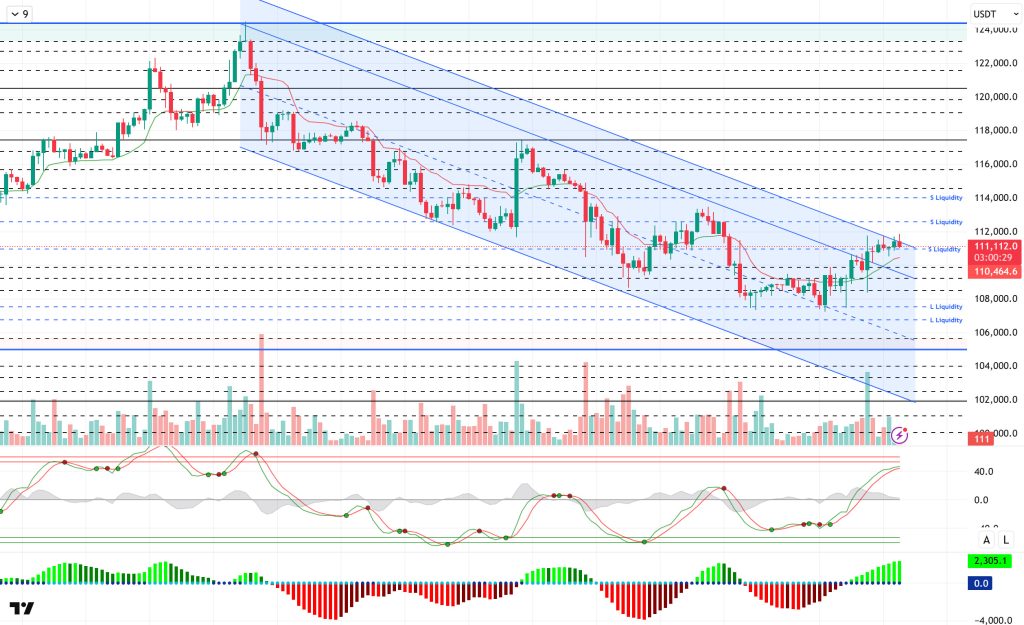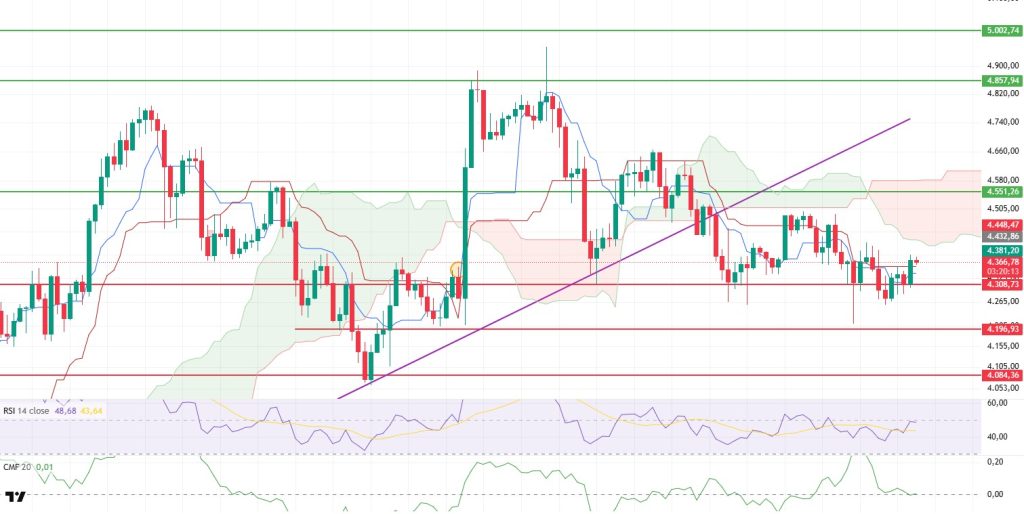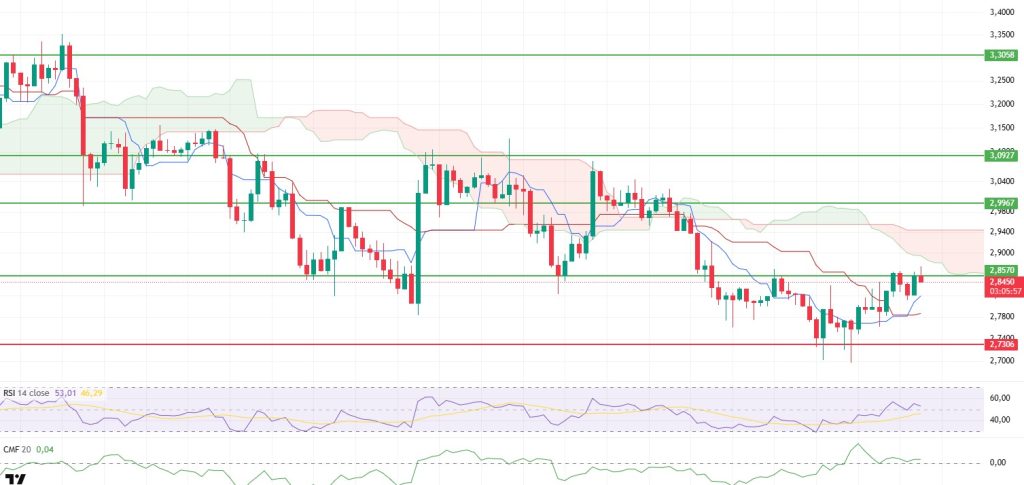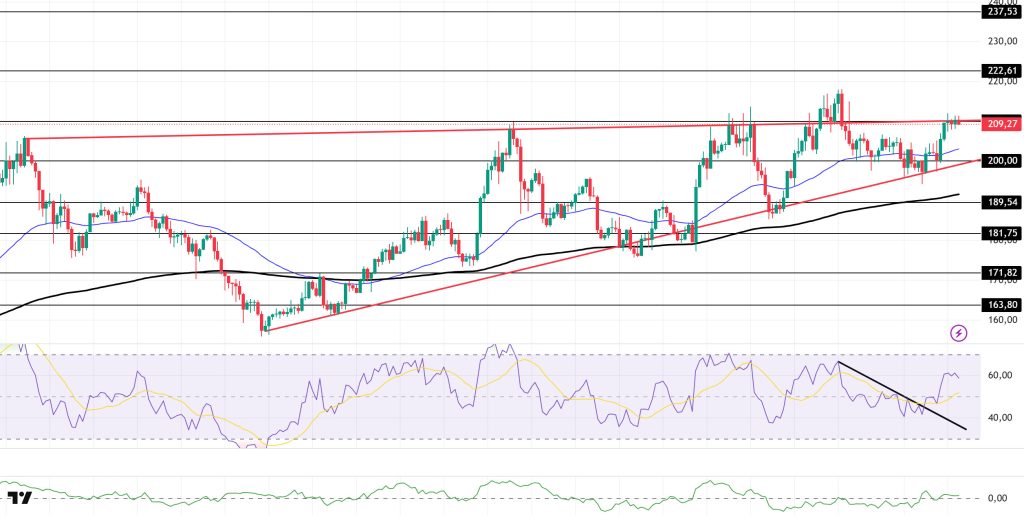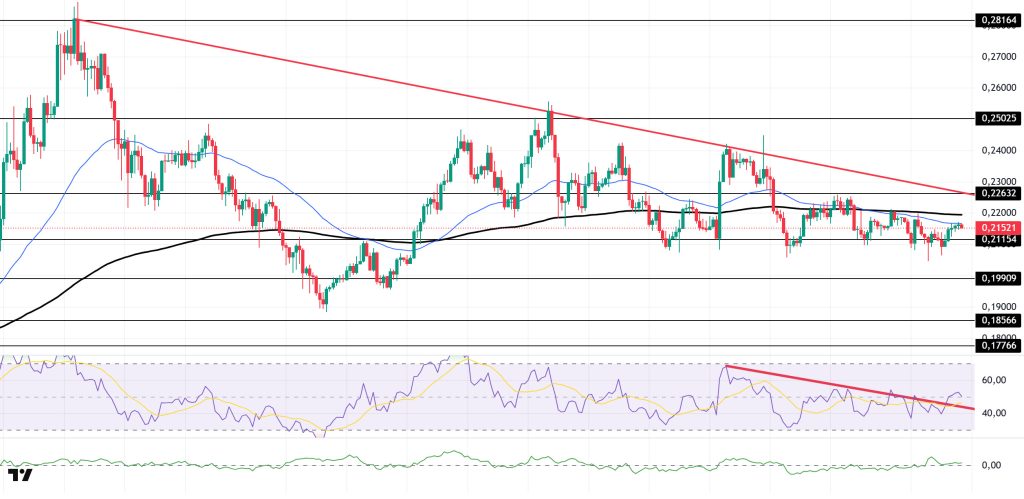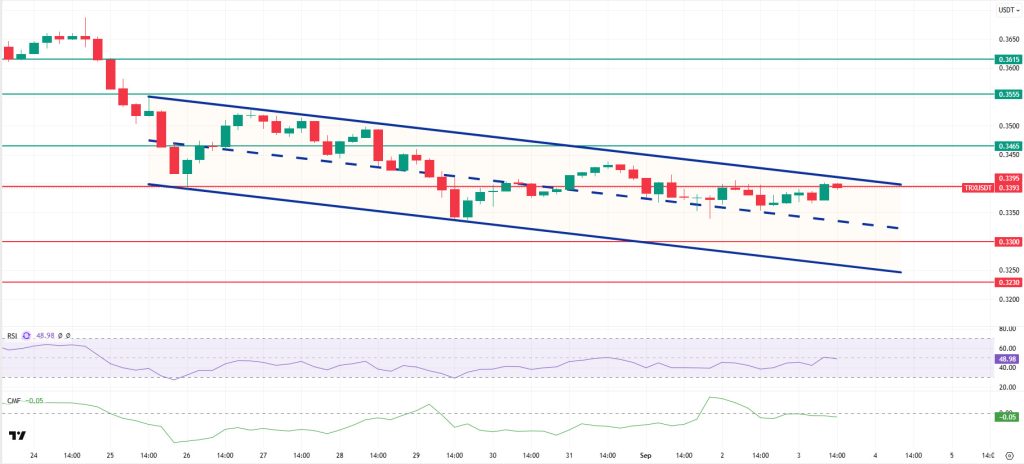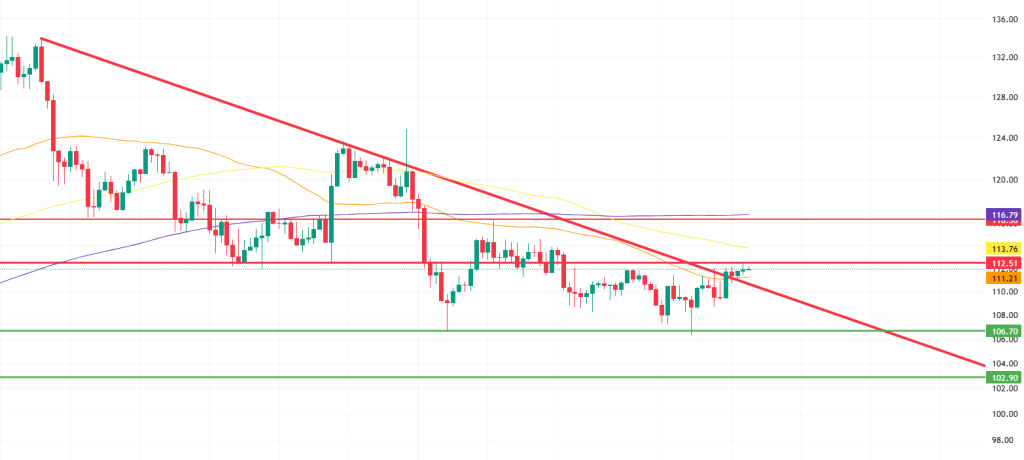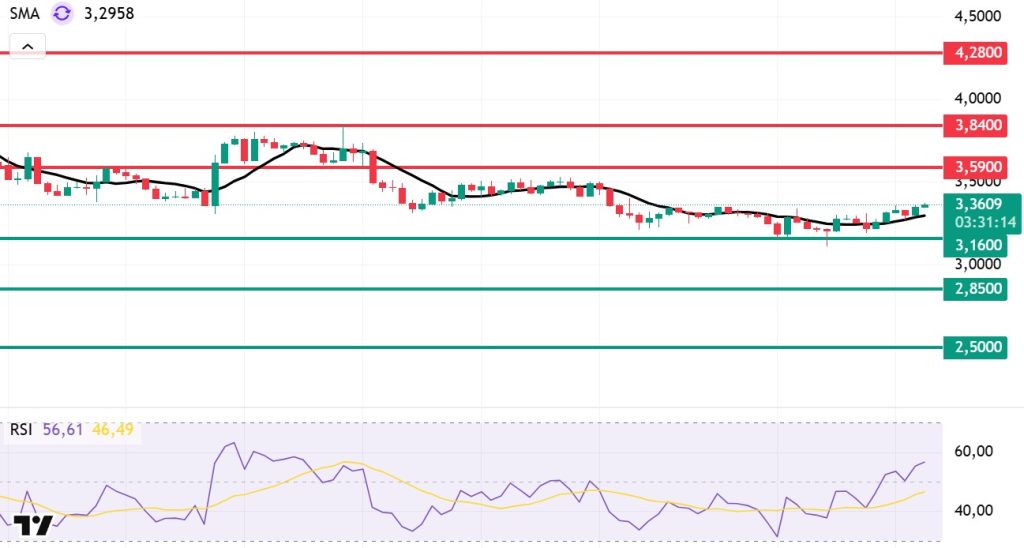Technical Analysis
BTC/USDT
Morgan Stanley stated that strong employment data could delay the Fed’s plans to cut interest rates in September. Fed member Waller, however, pointed to interest rate cuts this month and in the coming months. AmeMarket Close Watch: Channel Breaks and Key Levelsrican Bitcoin, linked to the Trump family, completed its merger with Gryphon Digital Mining and began trading today on Nasdaq under the ticker “ABTC.” Eric Trump said the company had worked hard over the past 12 months to get listed. Sweden-based H100 Group purchased an additional 47.16 BTC, bringing its total holdings to 1,004 BTC.
Looking at the technical picture, BTC continues to price within a parallel trend channel extension after breaking through the descending trend channel. At the time of writing, BTC tested the 111,800 level but retreated to 111,000 amid increased volatility.
Technical indicators, despite weakening with the upward movement in the Wave Trend oscillator (WT), turned upward again and reached the overbought zone. The Squeeze Momentum (SM) indicator continues to provide momentum support by moving into positive territory. The Kaufman moving average is currently trading below the price at 110,466.
Looking at liquidity data, short-term sell-side transactions show accumulation around the 112,500 level, while the 114,000 level emerges as an intense accumulation zone in a broader timeframe. The buying level has started to accumulate around the 110,000 level in the short term, while the 106,500 – 107,500 band continues to be an intense accumulation zone.
In summary, the disappearance of the recent optimistic mood due to fundamental developments, coupled with discussions among Fed members about interest rate cuts and new task allocations, and the continued focus on tariffs, are emerging as factors putting pressure on prices. Technically, while the formation of a suitable ground for a new upward movement has created some recovery, the fact that the increases remain in the form of liquidity purchases is noteworthy. The upward movement could turn into a trend if new catalysts reappear in the market and create a driving force on the price. In this context, the 111,000 level stands out as a resistance area in the continuation of the upward movement, and we will follow the 112,000 level along with momentum. In the event of a potential selling pressure, we will monitor the 108,500 level if the 110,000 level is broken.
Supports: 108,500 – 107,400 – 105,000
Resistances: 111,000 – 112,600 – 114,000
ETH/USDT
The upward movement seen in the ETH price during the day gained momentum with the break of the 4,355 dollar kijun resistance tested in the morning hours, and the price rose to 4,385 dollars. Towards the end of the day, the price retreated slightly and stabilized around 4,360 dollars. While this movement indicates increased buyer interest in the market, a closer look reveals that purchases were predominantly on the futures side. The Cumulative Volume Delta (CVD) indicator clearly shows that the majority of volume came from derivatives markets, while the increase in open interest supports this picture and confirms that long positions are gaining strength.
In contrast, demand in the spot markets is not as strong. The Chaikin Money Flow (CMF) indicator’s continued horizontal movement around the zero line, despite the price increase, indicates that aggressive buying in the spot market remains limited. This highlights the need for stronger volume, particularly in the spot market, for the price to establish a sustained upward trend.
In the Ichimoku indicator, the price gaining both the tenkan and kijun levels supports the short-term outlook. However, as the price is still trading below the kumo cloud, the negative structure of the main trend has not changed. The continued downward expansion of the kumo cloud stands out as another technical signal indicating that stronger momentum is needed for the uptrend to be sustainable. Therefore, it is still too early to expect a shift to a medium-to-long-term positive trend without the price settling above the kumo cloud.
On the momentum side, recovery signals are gaining strength. The Relative Strength Index (RSI) has risen above the MA line and reached the 50 level again, supporting the short-term positive trend. Today’s recovery, especially compared to yesterday’s weak momentum, indicates that buyers are starting to take a more active role in the market again.
Assessing the short-term picture, the $4,308 level remains a critical key support. As long as it stays above this support, buyers are expected to maintain control of the mark . Above, the $4,551 level stands out as a critical resistance. A strong break above this level has the potential to turn the overall price trend positive. However, until this breakout occurs, there is a risk that any rallies will be limited to short-term reactions.
Support levels: 4,308 – 4,196 – 4,084
Resistance levels: 4,551 – 5,857 – 5,000
XRP/USDT
Although the XRP price rose to $2.87 during the day, it lost momentum due to selling pressure in this region and fell to $2.85, remaining below the critical resistance zone at $2.86. This movement shows that buyers are more cautious in the short term and that upward attempts are not supported by strong volume.
On the liquidity side, the Chaikin Money Flow (CMF) indicator rebounded from the zero line and moved slightly upward, indicating that liquidity inflows, albeit limited, have begun. However, these inflows are not sufficient to provide the necessary momentum, and more intense buying on the spot side is needed for the price to capture a strong uptrend.
In the Ichimoku indicator, a positive signal is noticeable in the short term. The Tenkan level crossing above the Kijun level has generated a buy signal, which may support upward movement in the short term. However, the price still trading below the Kumo cloud clearly shows that the negative structure in the main trend continues. This scenario indicates that upward attempts can only turn into a more meaningful rise if supported by strong volume.
From a technical perspective, the $2.86 level stands out as a critical resistance. If the price closes above this level, it could potentially move up to $2.99. Below, the $2.73 level is a strong support. Holding this level could set the stage for the price to consolidate within a narrow range ( ); however, if this support is broken, selling pressure could increase again, and the price could experience a deeper pullback.
Although there is a general upward recovery trend in the short term, it is clear that volume and momentum need to increase for a strong trend reversal. Weak demand in the spot market is limiting upward attempts. Therefore, breaking above the $2.86 resistance level and sustaining above it is critical for XRP to begin a stronger recovery process.
Support levels: 2.7306 – 2.6513 – 2.4730
Resistance levels: 2.8570 – 2.9967 – 3.0927
SOL/USDT
The SOL price traded sideways during the day. The asset continued to remain within the ascending wedge formation that began on August 2. Gaining support from the base level of the formation and accelerating, the price is currently testing the ceiling level of the formation, which is a strong resistance point. If it closes above this level, the $222.61 level can be tracked. In case of a pullback, the $200.00 level could be triggered.
On the 4-hour chart, it remained above the 50 EMA (Exponential Moving Average – Blue Line) and 200 EMA (Black Line). This indicates that the upward trend may continue in the medium term. At the same time, the price being above both moving averages shows us that the market is trending upward in the short term. The Chaikin Money Flow (CMF-20) has risen into positive territory. Furthermore, an increase in money inflows could push the CMF to the upper levels of the positive zone. The Relative Strength Index (RSI-14) remains in positive territory. It has also managed to hold above the upper region of the downtrend that began on August 29. This indicates that buying pressure continues. If there is an uptrend due to macroeconomic data or positive news related to the Solana ecosystem, the $222.61 level stands out as a strong resistance point. If this level is broken upwards, the uptrend is expected to continue. Conversely, if there are pullbacks due to profit-taking or developments in the opposite direction ( ), the $200.00 level could be tested. A retreat to these support levels could increase buying momentum, presenting a potential opportunity for an uptrend.
Supports: 200.00 – 189.54 – 181.75
Resistances: 209.93 – 222.61 – 237.53
DOGE/USDT
The DOGE price continued to trade sideways during the day. The asset remained below the downtrend that began on July 21. The price, which faced resistance from the 50 EMA (Exponential Moving Average – Blue Line) and 200 EMA (Black Line) moving averages, found support at the strong support level of $0.21154 and is currently testing the 50 EMA moving average as resistance again. If the upward trend continues, the $0.22632 level should be monitored. If the downward trend continues, the $0.19909 level should be monitored.
On the 4-hour chart, the 50 EMA (Blue Line) remained below the 200 EMA (Black Line). This indicates that a medium-term downward trend has begun. The price being below both moving averages also shows that the asset is in a downward trend in the short term. The Chaikin Money Flow (CMF-20) remained in positive territory. Additionally, a decrease in money inflows could push the CMF into the negative zone. The Relative Strength Index (RSI-14) rose to a positive level. At the same time, it continues to be in the upper region of the downward trend that began on August 22. These could trigger an uptrend. In the event of an uptrend driven by political developments, macroeconomic data, or positive news flow in the DOGE ecosystem, the $0.22632 level stands out as a strong resistance zone. In the opposite scenario or in the event of potential negative news flow, the $0.19909 level could be triggered. A decline to these levels could increase momentum and potentially initiate a new upward wave.
Supports: 0.21154 – 0.19909 – 0.18566
Resistances: 0.22632 – 0.25025 – 0.28164
TRX/USDT
As mentioned in this morning’s analysis, TRX managed to stay above the 0.3395 resistance level after a limited rise, but is currently trading at 0.3393 due to selling pressure from the upper band of the bearish channel. Currently just below the upper band of the bearish channel, TRX is attempting to break below the 0.3395 resistance level on the 4-hour chart. The Relative Strength Index (RSI) value of 48 indicates that it is in the sell zone. In addition, the Chaikin Money Flow (CMF) indicator continues to remain below zero with a value of -0.05, indicating a decrease in cash inflows. The CMF remaining in negative territory can be considered an indicator that the price may experience a decline.
In light of all these indicators, TRX may decline slightly in the second half of the day and move towards the middle band of the bearish channel. It may then test the 0.3300 support level. If it closes below this support level, it may continue to decline and then move towards the lower band of the channel to test the 0.3230 support level. If it fails to close below the 0.3395 support level, the CMF moving into positive territory could result in increased capital inflows, potentially breaking the channel upward. As a result, it could test the 0.3465 resistance level.
On the 4-hour chart, 0.3230 is an important support level, and as long as it remains above this level, the upward momentum is expected to continue. If this support is broken, selling pressure may increase.
Supports: 0.3395 – 0.3300 – 0.3230
Resistances: 0.3465 – 0.3555 – 0.3615
LTCUSDT
LTC gained 0.15% in value during the day, showing a positive outlook, while Bitcoin recorded a 0.20% decline. On the futures side, the rise of the long/short position ratio to 1.0169 indicates that market participants’ expectations have begun to show a predominantly upward trend. In addition, the return of funding rates to positive territory confirms the decline in short positions. This picture reveals that the upward trend in the spot market has begun to be reflected in the derivatives market as well.
LTC has completed the first step in strengthening upward expectations by continuing to stay above its 50-period moving average (orange line). This move, along with holding above the falling trend line, supports the market’s positive sentiment. Having successfully passed the retest process for the trend line, LTC can be said to be looking for an opportunity for an upward breakout. If an upward movement occurs, the first target will be the 112.51 level, followed by the 113.76 level, where the 100-period moving average (yellow line) passes, which is an intermediate resistance level. In the final stage, the 116.36 level, located near the 200-period moving average (purple line), will be a strong horizontal resistance zone where selling pressure could intensify.
On the other hand, if the upward attempts fail and the price falls below the 50-period moving average, panic could set in the market. In such a scenario, the first minor support level to hold onto is 106.70, while 102.90 emerges as a critical support level if the decline deepens.
Supports: 111.21 – 106.70 – 102.90
Resistances: 112.51 – 113.76 – 116.36
SUI/USDT
Looking at Sui’s technical outlook, we see that the price has declined on a weekly basis to around $3.36, influenced by fundamental developments. The Relative Strength Index (RSI) is currently in the range of 56.61 – 46.49. This range indicates that the market is trading close to the sell zone; however, if the RSI weakens and falls to the 30.00 – 35.00 range, it could signal a potential buying point. If the price moves upward, the resistance levels of $3.59, $3.84, and $4.28 can be monitored. However, if the price falls to new lows, it could indicate that selling pressure is intensifying. In this case, the $3.16 and $2.85 levels stand out as strong support zones. In particular, in the event of sharp sell-offs, a pullback to $2.50 appears technically possible.
According to Simple Moving Averages (SMA) data, Sui’s average price is currently at $3.29. The price remaining below this level indicates that the current downtrend could technically continue. The downward trend of the SMA also supports this situation.
Support levels: 2.50 – 2.85 – 3.16
Resistances: 3.59 – 3.84 – 4.28
LEGAL NOTICE
The investment information, comments, and recommendations contained herein do not constitute investment advice. Investment advisory services are provided individually by authorized institutions taking into account the risk and return preferences of individuals. The comments and recommendations contained herein are of a general nature. These recommendations may not be suitable for your financial situation and risk and return preferences. Therefore, making an investment decision based solely on the information contained herein may not produce results in line with your expectations.



